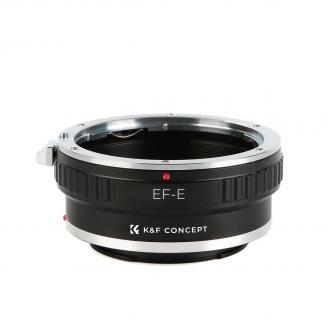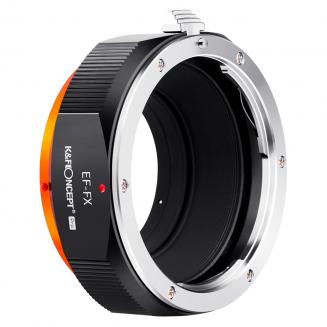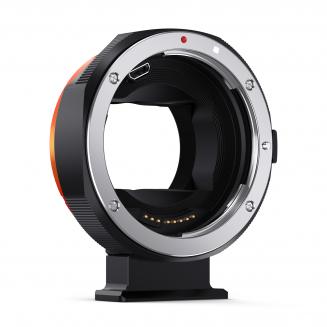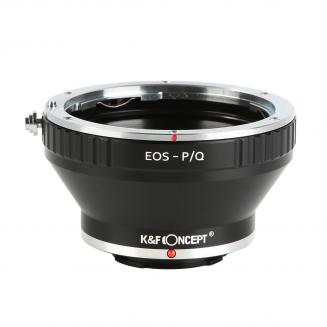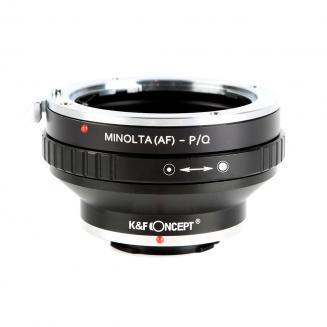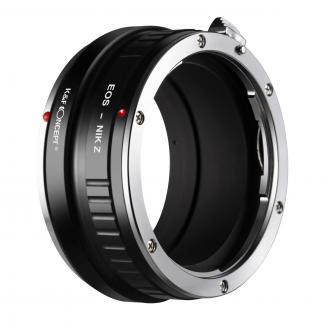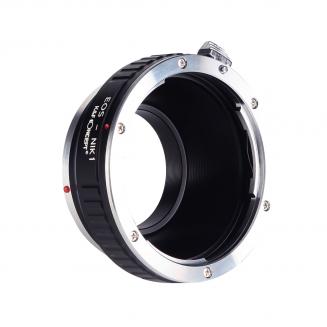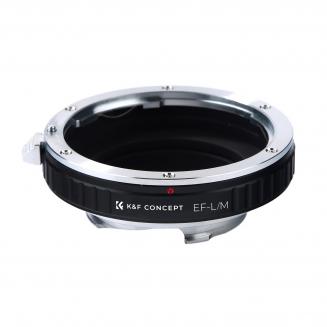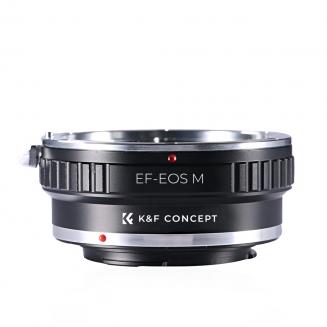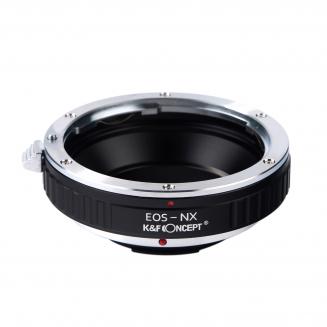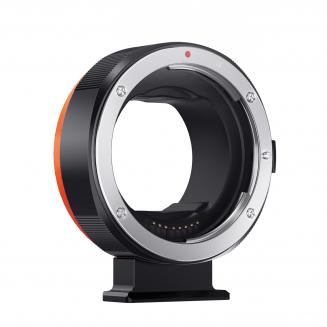What makes this special?
I'll mostly focus on what makes this camera different. Besides those looking for a fine all-around camera with excellent image quality--Digital Photography Review's Midrange Camera of the Year--there are three groups who might be especially interested in the M6ii:1. Those who want to shoot some kinds of action, sports, birds in flight and such with a smaller and/or less expensive setup than with a DSLR.2. Those who want compact high resolution, and at a reasonable price.3. Those who already have EF-M or EF/EF-S-mount lenses they want to use on a leading-edge APS-C mirrorless body, or whose lens plans can be fulfilled with less expense via the EF-M mount, whose current lenses are all under $500.This is an enthusiast- to pro-level camera, and some of the terminology reflects that, but I hope most of it's intelligible to new enthusiasts.According to Canon, the M6ii is the replacement for both the M6 and M5, so I'll address the removable EVF.1. Action, pre-buffering, AF/AE, EVF speedIt's still early days, but the M6ii looks very promising for action. Several things contribute to good action shooting, one of which the M6ii leads its class in, and others it's very good at.It's the APS-C mirrorless with by far the most frames per second, has a pre-buffer mode, Servo (what most call continuous) autofocus mostly fast enough, and very little screen/EVF lag. I don't have the best lenses to test some of this, so part of what I'll say is based on reports in reviews and at forums.It has a 14fps mode for full-size RAW, JPEG, or both in bursts up to 25-48 shots. This mode uses the mechanical shutter, so no rolling shutter artifacts. There are also 7fps and 3fps modes.There's a 30fps mode for cropped 18MP C-RAW in up to 84-shot bursts (highest I've seen is 71). The crop leaves 75% x 75%. This mode uses electronic shutter, so there can be rolling shutter artifacts, though it seems to scan fast enough to usually avoid those. And it's quiet.Pre-buffering is available for the 30fps mode. When selected, pressing the shutter button halfway starts recording at 30fps, temporarily storing the most recent 15. When you fully press the button to start shooting, the previous 15 frames are saved along with the new shots. Gives an extra half-second of reaction time.For action when you know where it will be, such as birds taking off or cars at a finish line, you can set up with AF lock and let fly with prebuffering to be sure to get the perfect frame.Servo (continuous) autofocus is fast, can be good even at 30fps. Naturally, as subject speed increases or size decreases, the number of keepers may go down. Tracking is good once locked in. For cars rushing along (large target), it's remarkably good. Good results have been reported for motorsports, hockey, basketball, footraces, and birds in flight. Some who own both still consider the 7Dii better for action overall, but in some ways the M6ii can match or beat it, and some prefer it for action.There's no setting to require focus acquisition before the next shot in burst modes.AF is good in low light, down to -5EV (full moonlight) at f/1.4 for stills, -2.5EV for 4K video. The on-sensor AF is reportedly actually better than most DSLRs when lenses are stopped down much.Auto exposure can also be set to adjust during burst modes, should your bird fly into shadows.The screen/EVF has live view between shots for the 7fps and 3fps modes. In 14fps and 30fps modes it shows the shot just taken between shots, a new image every .07 or .03 seconds, so it looks live and you can tell if you're tracking right.There's some extra post-processing required for the 30fps mode. The shots in one burst are stored in one file that only Canon's free Digital Photo Pro app recognizes. You have to extract shots you want one at a time, after which you can process normally. I expect that will change as other software catches up.The M6ii isn't weather sealed, so it's not ideal for use where it might get very wet or dirty.(There's no uncropped electronic-shutter burst mode, but you can trick the camera into shooting 7-9 fps that way by selecting focus bracketing, which uses the electronic shutter, and flipping the focus switch on the back or lens to manual before shooting. You can set up with AF, but it's only manual focus once you flip that switch. The sensor scan rate is slower than for the 30fps cropped mode, so rolling shutter may be more of a problem. Credit to R2D2 at DPReview forums.)2. Resolution, noise, diffraction32.5MP resolution is the highest among APS-C mirrorless cameras, about 25% more pixels than the next highest (26.1), about 12% more along one side. There are a few EF-M-mount lenses with resolution to match, making a compact, moderately-priced high-resolution package.A potential downside of more pixels is more noise. In challenging circumstances the M6ii can be a little noisier than some lower-resolution alternatives, at least if you're using that extra resolution, but it cleans up nicely, still quite usable for many purposes up to 6400-12800. In-camera JPEG noise reduction is impressive.An effect of higher resolution is that diffraction starts reducing sharpness sooner as you stop down the aperture. The effect is barely noticeable compared to the M5 and M6, about 1/4-stop sooner. Compared to some others it's more like a full stop. Worth keeping in mind to get the most resolution out of the sensor.3. Lenses (including the kit lens), EF/EF-S adapterThe M6ii is the most advanced mirrorless APS-C body that will accept the most Canon EF-M or EF/EF-S lenses with the fewest compromises. I put it that way because EF/EF-S lenses can be used on non-Canon bodies with adapters, but with varying degrees of success: some function normally, some not nearly as well as on the M6ii.The lenses that best preserve the size advantages of this camera are EF-M. There are seven from Canon, plus three with EF-M mounts from Sigma, covering 11-200mm (18-320mm equivalent), with excellent fast (f/1.4) primes at wide, standard, and portrait focal lengths. There are also numerous EF-M-mount lenses, mostly manual, from budget manufacturers. And more are on the way. And all EF-M lenses are under $500.There are EF/EF-S-mount lenses that serve every imaginable purpose. For those you need an adapter. No glass or chip is involved, and full functionality is preserved. (I use the Meike adapter, cheap and very light because it's plastic except for the business ends, sold under several names here. Works fine.)My main camera has been a Sony A7, but most of the lenses I've bought to use with it have EF/EF-S mounts, because of cost. So for now I'm using the famous EF 50mm (80mm equivalent) f/1.8, the EF-S 55-250 (88-400mm equivalent) IS, and some third-party ones, a motley but effective budget crew for most purposes.With the viewfinder (essential for me), the M6ii body is similar in size and weight to my A7, but the difference in the size and weight of the equivalent kit zoom lenses makes me laugh. It's like the difference between having a lime and a large orange in front.That lime, the 15-45mm (24-72mm), is a good, inconspicuous walk-around lens. 24mm is wider than most kit lenses, which I like. It's not fast, f/3.5-6.3, but the image stabilization, over 3 stops worth, allows it to be used at slow shutter speeds. (The slowness allows it to be compact.) Sharpness and color are fairly good. Bokeh can be a little edgy.That kit lens and EVF cost $500 total separately, and this kit is only $250 more than the body, so it's a good deal.The other six current Canon EF-M lenses, all with STM AF, all compact and inexpensive for what they do:11-22mm (18-35mm equivalent) f/4-5.6 with IS18-150mm (29-240mm) f/3.5-6.3 IS (also a kit lens)22mm (35mm) f/228mm (45mm) f/3.5 Macro (1.2x) IS32mm (51mm) f/1.455-200 (88-320mm) f/4.5-6.3 IS.The three EF-M-mount lenses from Sigma, all f/1.4 with AF: 16mm (26mm), 30mm (48mm), 56mm (90mm).Viltrox is reportedly about to release three more, all f/1.4 with AF: 23mm (37mm), 33mm (53mm), 56mm (90mm).There are also some useful cheaper lenses sold with EF-M mounts from brands like Samyang/Rokinon, Meike/Neewer, Tamron, etc. Mostly completely manual, but not always.Among the primes, the performance stars for sharpness that matches the high resolution of this camera even wide open are the Canon 32 and Sigma 56. The Canon 22 also deserves notice for its combination of speed, pancake compactness, and fine image quality.For the zooms, the 11-22 is a favorite for good sharpness and overall performance.The M6ii's competitors have an advantage in being able to use their brand's full-frame mirrorless lenses without an adapter, which the Canon M cameras can't do even with a adapter. (The smaller M mount does allow the lenses to be a bit smaller than they would be if they shared the R mount.)Removable EVF, touch-and-drag AFNot having a built-in viewfinder makes the body smaller, lighter and less expensive, and you can still add the EVF when you want it. It's quite sturdy, normal use isn't likely to hurt it.The removable EVF makes it easier to use the touchscreen to set focus points/frames while you're looking through the EVF, a feature Canon calls touch-and-drag AF. With a built-in EVF your face gets in the way of your finger and may move the focus point accidentally. This removable EVF sticks back away from the screen enough to make touch and drag more practical.If you get the EVF with one of the kits, it's essentially free.But you do have to take it off to use the hot shoe for a flash, which I don't like.Video, vloggingVideo is uncropped up to 4K at 30fps (or 25, 24 is due via firmware update in 2020), FHD up to 120fps. You can shoot half-hour clips.It looks good. AF, including tracking, is accurate and smooth, even in low light. City night street scenes are easy. Color is good across changing light sources. Reviewers say the 4K isn't quite as sharp as what you can get from some competing cameras, though I haven't noticed when casually watching vids from both.There's digital image stabilization that I haven't tried yet, but it should be especially handy with lenses lacking IS. It applies about a 10% crop so the image gets a bit larger (still 4K). People say it's effective.For vlogging, you can tilt up the screen so you can see it from the front. There's a 1/8" (3.5mm) microphone jack, but no provision for headphones.Fv modeThis has the usual exposure modes, plus Fv mode (Flexible-value or Flexible-priority). By default, it's just like P (Program or Auto) mode. What's different is that you can use two of the top dials to quickly control shutter speed, aperture, ISO and/or exposure compensation via a menu at the bottom of the live screen/EVF, so you don't need to look away from what you're shooting. You can control things fully manually that way; whatever you don't change remains in auto mode. Settings stay as you last had them when you turned the camera off. Pressing a certain button on the back returns you to full auto.Battery life, third-party batteriesThe battery life spec, 305 shots, isn't even close, common for this kind of camera. I haven't made a good battery test yet, but I've read two reports of over 3,000 shots with power still left using drive modes, and one of over 1,200 using bursts of 2-3 shots and EVF. One person says he often shoots 400-800 shots without the battery indicator moving from full.Unlike the M6 and M5, the M6ii treats third-party batteries the same as Canon brand, including showing the battery level. (Canon recommends using only Canon brand. I've always used third-party batteries in my cameras, after reading reviews, and have never had any trouble.)FlashRated for 15 feet and 15mm focal length (24mm equivalent), able to be angled upward for bounce flash, 3.4-second recycle time.Silver vs blackThe color options are mostly about looks, but if you'll be shooting in hot sun a lot, the silver color might absorb less heat. Cameras can overheat in heavy use.Some find the silver color looks retro. Some find it less professional, which can be an advantage or disadvantage. Many find black less conspicuous, or stealthier.FutureThere's concern about how long Canon will continue the M series. The number of Canon EF-M lenses remains small, and recently Canon introduced its full-frame mirrorless R system, which has its own mount incompatible with the M system. Canon could introduce an APS-C R series and make M obsolete. It would have the advantage of allowing their APS-C and full-frame mirrorless models to share lenses. It would have the disadvantage of making the APS-C lenses and/or cameras a bit bigger to fit the larger mount.As an owner of the Nikon V1, part of the discontinued 1 series, I think this is a legitimate concern. The best argument against it may be the M6ii itself, which represents a clear commitment to significantly upgrading the M series. And there are rumors of another M camera next year.Other pointsThe grip and button positions are great for my smallish male hand; some with larger hands find it crowded. Some complain about using large lenses with a small body, but I always put a hand under large lenses anyway. Has a nice textured, grippy surface.This is customizable in a zillion ways, including what you see on the screen/viewfinder and what you can assign the buttons and dials to do. You can have two sets of custom settings.The downloadable manual is 600 pages, and that's all in English. I don't think it will be a bestseller. Despite the level of detail, I often find it hard to follow, with an over-reliance on symbols. Some parts are hard to find, some points not explained, and it was easier to look some stuff up with Google. But it's still very useful for stepping through most of the incredible array of things that are packed into this little device.


